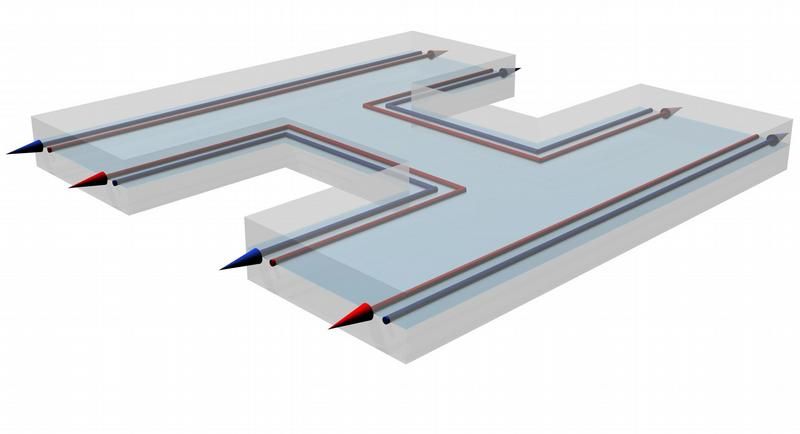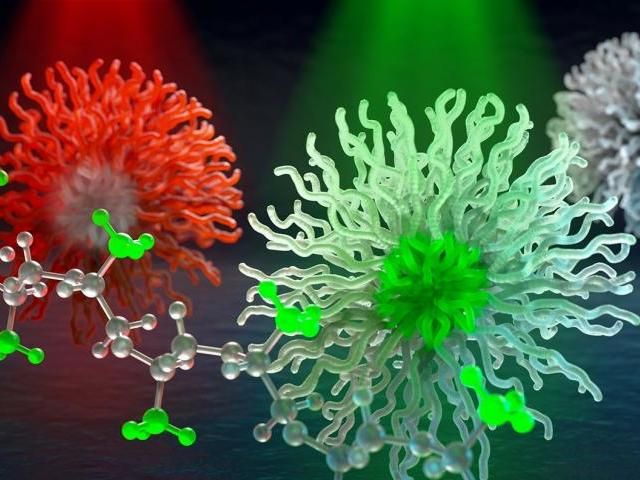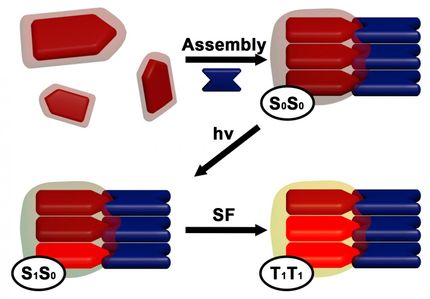When is a molecule a molecule?
Scientists watch fast electron jumps in exploding molecules
Using ultra-short X-ray flashes, an international team of researchers watched electrons jumping between the fragments of exploding molecules. The study reveals up to what distance a charge transfer between the two molecular fragments can occur, marking the limit of the molecular regime. The technique used can show the dynamics of charge transfer in a wide range of molecular systems, as the scientists around Dr. Benjamin Erk and Dr. Daniel Rolles of DESY and Professor Artem Rudenko of Kansas State University report in the scientific journal Science. Such mechanisms play a role in numerous chemical processes, including photosynthesis.
"The charge transfer takes place at up to approximately ten times the normal bond length," says Erk, a DESY scientist working with the free-electron laser FLASH and at the Center for Free-Electron Laser Science (CFEL), a cooperation between DESY, the University of Hamburg and the Max Planck Society. "A central question posed is: when is a molecule a molecule," Rudenko says, explaining the motivation behind the study. "In this case then, up to what distance do the molecular components share electrons, at what distance does the charge transfer between the two molecular fragments break down? The critical distance we measured marks the transition from the molecular to the atomic regime."
For their study, the scientists shot an infrared laser at molecules of iodomethane (CH3I), made of iodine and a methyl group (CH3), to break the bond of the two partners. "With the help of ultra-short X-ray pulses, electrons were knocked from the inner shells of the iodine atoms, allowing us to then observe how the shared electrons of the disintegrating molecule were distributed between the two fragments," explains Rolles, who heads a junior research group at DESY. The researchers used what is currently the world's most powerful X-ray laser, LCLS, which is located at the SLAC National Accelerator Laboratory in California.
"During each step we delayed the X-ray pulse a bit more after the infrared laser pulse," says Erk. This delay ranged between a few femtoseconds and one picosecond, that is a trillionth of a second. "The later the X-ray pulse arrives, the farther apart the two molecular constituents move from each other." The researchers thus managed to obtain a series of snapshots in which the electron transfer can be observed at an ever-increasing distance between the molecular debris.
"The further apart the fragments move, the more the probability of the charge transfer decreases," explains Erk. "We were able to detect electrons jumping between the two fragments up to a distance of about 20 Ångström." The bond length of iodomethane is only about 2 Ångström, or 0.2 nanometres (millionths of a millimetre).
"Our results are important for a variety of systems," stresses Rudenko. "For instance, in astrophysics X-rays produced by charge transfer processes have been observed. Such mechanisms play an important role in numerous chemical processes, for example, in photosynthesis or in solar cells. And during their research, scientists who study biomolecules using X-rays struggle with radiation damage to their samples. Here, too, the processes we studied play an important role."
These first results also provide a bridge between the study of electron transfer between single atoms and the analysis of the charge flow in larger systems such as those that often occur in biology and chemistry. Further investigations will help to understand the observed process of charge transfer in detail.
Original publication
Original publication
Benjamin Erk, Artem Rudenko et al; "Imaging charge transfer in iodomethane upon x-ray photoabsorption."; Science, 2014.
Organizations
Other news from the department science

Get the chemical industry in your inbox
By submitting this form you agree that LUMITOS AG will send you the newsletter(s) selected above by email. Your data will not be passed on to third parties. Your data will be stored and processed in accordance with our data protection regulations. LUMITOS may contact you by email for the purpose of advertising or market and opinion surveys. You can revoke your consent at any time without giving reasons to LUMITOS AG, Ernst-Augustin-Str. 2, 12489 Berlin, Germany or by e-mail at revoke@lumitos.com with effect for the future. In addition, each email contains a link to unsubscribe from the corresponding newsletter.
Most read news
More news from our other portals
Last viewed contents
How natural oils can be hydrogenated without making unhealthy trans fats - UC Riverside researchers illustrate how controlling shape of heterogeneous catalysts can promote desired chemical reaction
MEDIGENE FOCUSES ON CORE COMPETENCIES - Spin off MediGenomix sold to Eurofins Scientific
Avecia Tunes in to 'pPop'TM Gene Expression System
Ace_Industry

Semiconductors for Cool Computers
Study Finds New Properties in Non-Magnetic Materials
Campbell_Brothers

Soft X-ray method promises nanocarrier breakthroughs - Before the huge potential of tiny nanocarriers for highly targeted drug delivery and environmental clean-up can be realized, scientists first need to be able to see them




























































